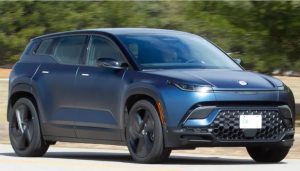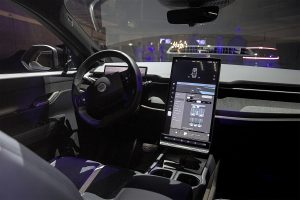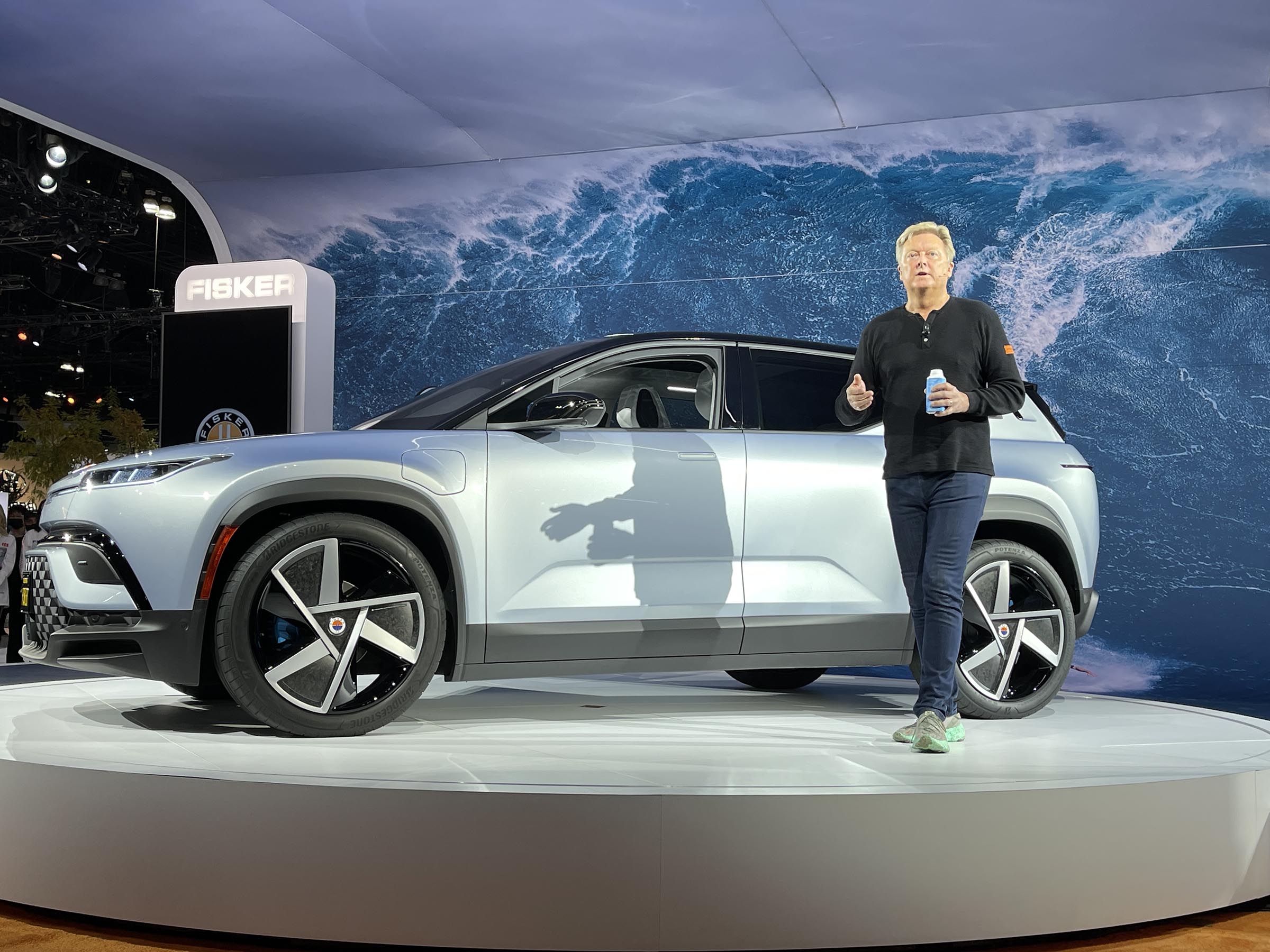“Incomplete” and “Inexcusable.” Things haven’t been going well for Fisker Inc., the EV start-up that has begun taking steps that could lead to a bankruptcy filing in the coming weeks. Fisker has also announced it is halting production for six weeks. It’s unclear if the company will use that pause to address some of the issues with its first product line, the Fisker Ocean. Based on a new review by Consumer Reports, the list is a long one.

CR’s Fisker Ocean came with both a scratch and a dent – and no clear way to get it fixed. (Photo courtesy: John Powers/Consumer Reports)
From a “bizarre” delivery experience to a a “nauseating” ride, it’s safe to say the reviewers at Consumer Reports are not impressed with the Fisker Ocean. The non-profit organization’s first review is likely the harshest we have seen in years, even when compared to some of what was written after members of the automotive media got their first experience last year behind the wheel of the VinFast VF 8.
For those not familiar with Fisker, it’s the second attempt to create an automotive company by Henrik Fisker, the Danish designer best known for his work at Aston Martin. His first company, Fisker Automotive, went into Chapter 7 bankruptcy and was liquidated in 2011. His new firm, Fisker Inc., launched the Ocean, a compact, all-electric EV, late in 2022, though production has been limited and is now in a six-week hold as the new company struggles to head off its own bankruptcy filing.
Anchors aweigh

One of the unusual features of the Fisker Ocean is “California Mode,” where all glass but the windshield rolls down with a single push of a button.
Going up against a wide array of domestic and foreign all-electric EVs, the Fisker might seem promising on paper, with reasonable power, good range, a cabin using sustainable materials and features like a rotating, 16-inch touchscreen that can be positioned either in landscape or portrait mode. Its “California Mode” allows one-touch operations of the windows, including a rolldown back glass. The electric crossover also is loaded up with a variety of advanced driver assistance systems.
Unfortunately, the Consumer Reports review suggests that the Ocean they purchased hasn’t come close to meeting expectations. (You can read the full review if you’re a CR subscriber by Clicking Here.)
“So far, our experience with the Ocean is like ordering pizza at a new, buzzy restaurant, only to get a pie with undercooked dough and no sauce because the tomatoes are still growing. The tantalizing promise of the final product is right there in front of us, but it’s quite unappealing in its current state.”
More Fisker News
- Fisker Shares Collapse After Bankruptcy Report
- “High Likelihood” of Tie-Up Between Nissan and Fisker
- Fisker Says His Company’s Future is in “Substantial Doubt”
Good design. But that’s about it

One of the novel features of the Fisker Ocean is its rotating touchscreen. (Photo: Courtesy Wikipedia)
CR’s reviewers weren’t entirely negative. Like many others, they praised Fisker for coming up with a “truly innovative design, and we hope other automakers copy it—or at least learn from it.” They liked Ocean’s large cargo space and the recessed area that kept grocery bags from sliding around. And they praised the roomy passenger compartment with its flat load floor. They even highlighted the quirky, pull-out taco drawer
Everything else? Their headline summed it up, calling the EV “one of the strangest cars we’ve ever encountered.” And, apparently, one of the most unpleasant to drive.
Among other things, it featured a ride described as both “nauseating and jarring.”
Then there’s the regenerative braking system which allows energy normally lost during braking and coasting to be recaptured and sent back to the battery back to extend range. The system, however, “is poorly tuned and difficult to modulate, a nauseating experience that called to mind childhood memories of driving with my Aunt Irene in her Buick LeSabre,” wrote reviewer Keith Barry.
“Incomplete” software

Fisker has focused on direct-to-consumer orders and deliveries though it has a handful of stores, this one in Munich, Germany.
The CR reviewer is particularly harsh when it comes to Ocean’s onboard technology. As one tester summed things up, “This is the most incomplete car I’ve driven in my career, and that includes preproduction models.”
Peculiarly, the reviewer found that some safety systems, such as blind spot detection warning and lane keeping assist, would be available one day and then disappear the next. The adaptive cruise control system – which uses radar to maintain speed with the traffic ahead – has never been available, even while listed on the Ocean’s Monroney sticker. Other features are listed but, it turns out, aren’t expected to be functional until Fisker activates a smartphone-style over-the-air update some point in the future. With bankruptcy looming, it’s anyone’s guess if that ever will happen.
Trying to pair a smartphone using Bluetooth was particularly frustrating, Barry writing that,” It feels like the Ocean’s software designers got some sadistic pleasure from programming new and different ways to prevent Bluetooth from connecting.”
That sinking feeling
According to the review, pretty much everything went wrong from the start. Fisker sells the Ocean online and then delivers it to customers. The crew that brought the EV to the Consumer Reports facility struggled to get it off the truck because its parking brake wouldn’t release.
Add the fact that Fisker charges $2,438 in delivery fees, about the highest figure in the industry.
Once they got it unloaded things got worse. There was “a dent, a scratch and no floor mats.” And Fisker technicians couldn’t say how to get things fixed. And there’s no way to address the materials used in the vehicle, cloth upholstery that “feels like a cheap polyester suit.”
Perhaps there’s a silver lining. CR buys the vehicles it reviews. But it says Fisker has yet to cash its $63,981. “They told us they couldn’t find it.”






0 Comments